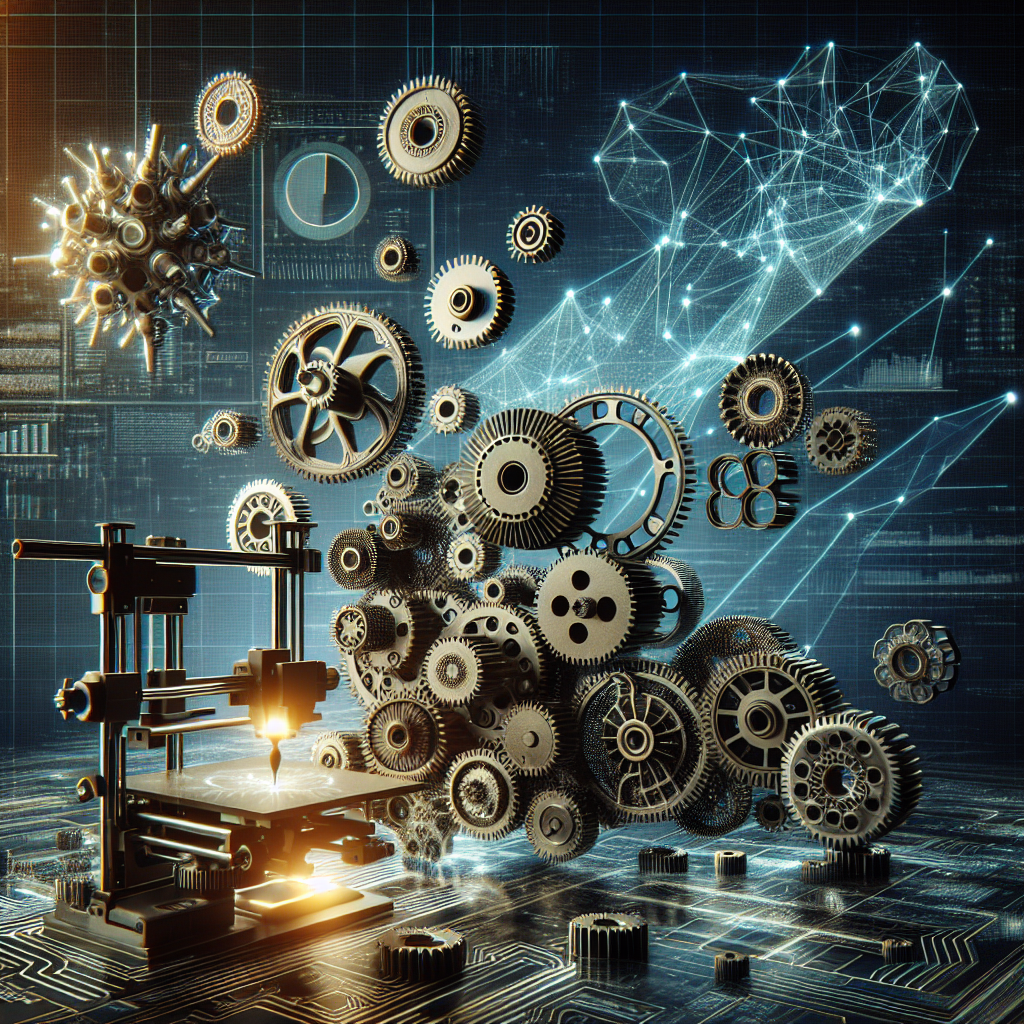Artificial intelligence (AI) and predictive maintenance have revolutionized the manufacturing industry, particularly in the field of metal additive manufacturing. Metal additive manufacturing, also known as 3D printing, is a rapidly growing sector that has the potential to transform the way products are designed and manufactured. By leveraging AI and predictive maintenance, manufacturers can optimize their production processes, reduce downtime, and improve overall productivity.
AI in Metal Additive Manufacturing
AI refers to the simulation of human intelligence in machines that are programmed to think and act like humans. In the context of metal additive manufacturing, AI can be used to optimize the design of components, predict potential defects, and improve production efficiency. One of the key benefits of using AI in metal additive manufacturing is its ability to analyze large amounts of data quickly and accurately. This allows manufacturers to make informed decisions based on real-time data, leading to improved product quality and reduced costs.
AI can be used in various stages of the metal additive manufacturing process, from design to post-processing. For example, AI algorithms can analyze design data to identify potential areas for improvement and optimize the design of components for better performance. During the printing process, AI can monitor key parameters such as temperature, pressure, and speed to ensure that the printing process is running smoothly and to detect any anomalies that may lead to defects. AI can also be used to predict potential equipment failures and schedule maintenance before a breakdown occurs, leading to reduced downtime and increased productivity.
Predictive Maintenance in Metal Additive Manufacturing
Predictive maintenance is a proactive maintenance strategy that uses data analysis and machine learning algorithms to predict when equipment is likely to fail and schedule maintenance before a breakdown occurs. In the context of metal additive manufacturing, predictive maintenance can help manufacturers reduce downtime, improve equipment reliability, and extend the lifespan of their machines.
One of the key advantages of predictive maintenance is its ability to identify potential issues before they become critical. By analyzing data from sensors and monitoring equipment performance in real-time, manufacturers can detect early warning signs of equipment failure and take corrective action before a breakdown occurs. This not only reduces downtime but also minimizes the risk of costly repairs and production delays.
Predictive maintenance can be implemented in various ways in metal additive manufacturing, such as monitoring equipment performance, analyzing historical data, and using machine learning algorithms to predict potential failures. By combining predictive maintenance with AI, manufacturers can create a powerful tool that can optimize their production processes, improve equipment reliability, and reduce costs.
Benefits of AI and Predictive Maintenance in Metal Additive Manufacturing
There are several benefits to using AI and predictive maintenance in metal additive manufacturing. Some of the key benefits include:
1. Improved Product Quality: By optimizing the design of components and monitoring the printing process in real-time, manufacturers can improve the quality of their products and reduce the risk of defects.
2. Reduced Downtime: Predictive maintenance can help manufacturers schedule maintenance before a breakdown occurs, reducing downtime and increasing productivity.
3. Cost Savings: By reducing downtime, improving equipment reliability, and extending the lifespan of machines, manufacturers can save money on repairs and production delays.
4. Increased Efficiency: AI can analyze large amounts of data quickly and accurately, allowing manufacturers to make informed decisions that improve efficiency and productivity.
5. Competitive Advantage: By leveraging AI and predictive maintenance, manufacturers can stay ahead of the competition and adapt to changing market demands more effectively.
FAQs
Q: How does AI optimize the design of components in metal additive manufacturing?
A: AI algorithms can analyze design data to identify potential areas for improvement and optimize the design of components for better performance. By using AI to simulate different design scenarios, manufacturers can create components that are more efficient, durable, and cost-effective.
Q: How does predictive maintenance reduce downtime in metal additive manufacturing?
A: Predictive maintenance uses data analysis and machine learning algorithms to predict when equipment is likely to fail and schedule maintenance before a breakdown occurs. By monitoring equipment performance in real-time and detecting early warning signs of failure, manufacturers can reduce downtime and improve equipment reliability.
Q: What are some of the challenges of implementing AI and predictive maintenance in metal additive manufacturing?
A: Some of the challenges of implementing AI and predictive maintenance in metal additive manufacturing include the high cost of implementing new technologies, the need for specialized skills and expertise, and the complexity of integrating AI with existing production processes. However, with the right resources and support, manufacturers can overcome these challenges and reap the benefits of AI and predictive maintenance.
In conclusion, AI and predictive maintenance have the potential to transform the metal additive manufacturing industry by optimizing production processes, improving product quality, and reducing downtime. By leveraging AI algorithms and predictive maintenance strategies, manufacturers can stay ahead of the competition, reduce costs, and improve overall efficiency. As the technology continues to evolve, we can expect to see even greater advancements in metal additive manufacturing and the adoption of AI and predictive maintenance strategies across the industry.

